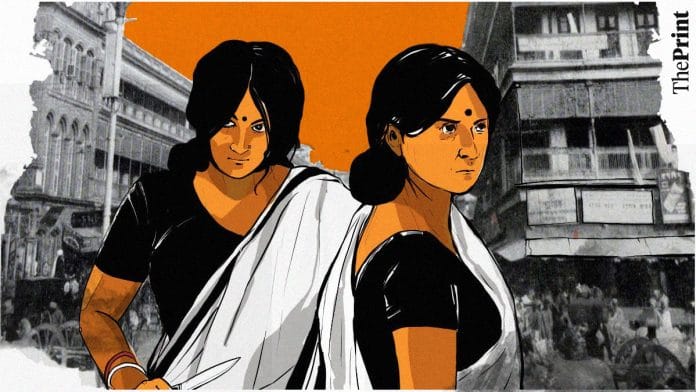New Delhi: Sometimes they committed murder and at other times it was ordinary manipulation and powerplay, with a side-dish of poison. The women of Bengal in the 18th and 19th centuries had a lot of skeletons in their closet. They were dacoits, murderers, and criminals of the highest order.
People are discomfited by the idea of female criminals— women are supposed to be paragons of virtue and upholders of morals, not petty thieves and killers. But, as a lecture by historian and author Sumita Banerjea at Delhi’s India International Centre (IIC) showed, even back in the day, women could be nefarious at every level of society.
“Women were doing the cruelest of things because of their hunger for power. They were often driven by superstition, and their targets were often those weaker than them,” said Banerjea.
By meticulously sifting through police records and contemporary accounts, Banerjea has been able to piece together the stories of numerous women who committed heinous crimes—although they often managed to weasel their way out of legal consequences.
One such woman insisted on moving in with her child to nurse her ailing brother-in-law, Peter Pereira, back to health. As the weeks went by, the consulting doctor realised that Pereira wasn’t getting better. In fact, not only were his symptoms worsening, they were changing.
Suspicious, the doctor contacted a detective, who disguised himself as a physician. The decoy then mildly broached the subject of Pereira’s mysterious symptoms with the sister-in-law. In response, she launched into a dramatic coughing fit and abruptly exited the room. The household staff had told her of the ‘doctor’s’ true identity.
As one does, she complained to her father, telling him she was being accused of poisoning her brother-in-law. Her horrified father eventually pieced together that this was indeed the truth, but she was his daughter. And so, she had to be protected. She was never charged with anything.
Within just over an hour, Banerjea regaled the audience of around 40 academics and true crime aficionados with a series of chilling stories that ranged from bizarre to terrifying. Some incidents were unearthed for the first time, while others have long been a part of Bengali lore. In one story, of a woman juggling two lovers, and an accomplice to the murder of one, Banerjea misstated the sequence of events, prompting gentle corrections from a few audience members.
In exploring the dark narratives of these women, it is essential to recognize the broader context of women’s empowerment in Bengal, where schemes like Lakshmir Bhandar have significantly impacted their lives, providing financial independence and agency.
Also Read: Gurugram men are quitting dating apps, alcohol, hiring lawyers. A woman on Bumble did this
The dark side of ambition
More often than not, these cold-blooded killers and con artists were protected by the supposed virtues of womanhood. They were beautiful, soft, and wielded their femininity expertly. Men, and society as a whole, were seldom able to comprehend what they were capable of—and so, some of these women committed crimes unchecked for decades.
“She’d use her guile to talk her way out, charming police officers. Cops would hide evidence,” said Banerjea, referring to Troilokya, popularly known as “Bengal’s first female serial killer”.
Troilokya’s is a story that seems tailor-made for Netflix’s true-crime ecosystem. She was young, disarmingly beautiful, and a prostitute. She and her married lover systematically conned a number of families in the 1800s by getting desperate grooms married off to sex workers, and robbing them in the process. But there was worse to come.
Troilokya eventually left her lover and spun a new web of deceit, luring local women to a desolate garden to steal their jewellery and then silence them. In the pond of this garden, she drowned at least five women. After being an active criminal for years, she was caught red-handed while attempting to drown her sixth victim.
Not all the women Banerjea discussed were serial killers, with the severity of their crimes varying greatly. But she identified certain commonalities: their cunning, selfishness, and a ruthless drive to get ahead. These very traits, Banerjea pointed out, are considered positive attributes in men.
While the methods employed by these women were undeniably extreme, their ambition itself was not unusual. There’s nothing necessarily subversive about desiring power and getting drunk off of it—other than when women do it. But societal discomfort surrounding female agency and ambition aside, it does add a new dimension when poisoning is involved.
(Edited by Asavari Singh)






